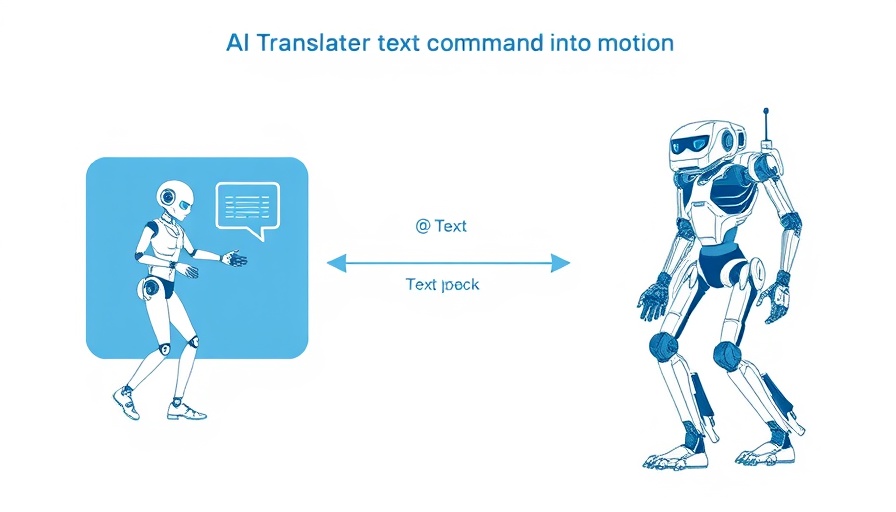
The Future of Motion: How AI is Transforming Robotics
In an exciting advancement within the field of artificial intelligence, researchers at Brown University have unveiled MotionGlot, a revolutionary AI model capable of converting text commands into intricate motion trajectories for various robots and animated avatars. Much like how ChatGPT generates human-like text, MotionGlot allows users to input simple commands and receive accurate movements from diverse robotic embodiments.
Bridging the Gap Between Language and Movement
MotionGlot is more than just another technological leap; it marks the intersection of language and robotics in a way that enhances the usability and functionality of machines. The model translates user instructions into corresponding actions, breaking down movements into a codified ‘language’ that can be interpreted by robots. For instance, a command like "walk forward a few steps and take a right" is seamlessly executed by the AI, irrespective of whether the machine is a humanoid robot or a quadruped.
Insights from Research: The Technology Behind Motion
Led by Sudarshan Harithas, a Ph.D. student in computer science, the research team describes this advancement as treating motion as a language. They draw parallels to how large language models like ChatGPT function through the concept of "next token prediction." By dissecting movements into discrete increments, the model predicts the necessary motion sequence based on the user’s instructions. This approach not only enhances the technology's flexibility but also opens new frontiers for deployment across multiple applications and industries.
Potential Applications and Benefits
Imagine a future where your commands to a robot or avatar result in precise physical actions, whether it be a robot performing delicate surgical procedures or an avatar seamlessly navigating a virtual environment. The implications are vast and varied, including breakthroughs in healthcare, entertainment, and service industries. MotionGlot’s versatility could enable personalized robots capable of fulfilling specific tasks, thus redefining how we interact with machines in our daily lives.
Ethical Considerations in AI-Driven Robotics
While the advancements in AI such as MotionGlot are promising, they also usher in a myriad of ethical considerations. As robots become more capable of executing complex actions based on human commands, there is an urgent need to address potential misuse and the broader impact on society. Questions around accountability for robot actions, privacy concerns with motion tracking, and potential job displacement due to automation must be critically examined.
The Road Ahead: Future Predictions for AI and Robotics
As we look ahead, the integration of artificial intelligence into robotics presents both remarkable opportunities and significant challenges. The continuous evolution of models like MotionGlot will likely spur innovations across robotics applications, influencing how robots learn and adapt to new tasks. Future iterations may further refine motion prediction technology, enabling even more sophisticated interaction frameworks between humans and machines.
Conclusion: Embracing the Age of Motion AI
The development of AI models like MotionGlot symbolizes a significant step toward a more interactive and responsive technological future. As these technologies advance, they will change how we perceive and interact with machines. Embracing these innovations while fostering a dialogue around ethical considerations will shape a responsible trajectory for robotics in society. If you're intrigued by the evolution of AI in robotics, stay informed about these remarkable developments in the field!
 Add Row
Add Row  Add
Add 




Write A Comment